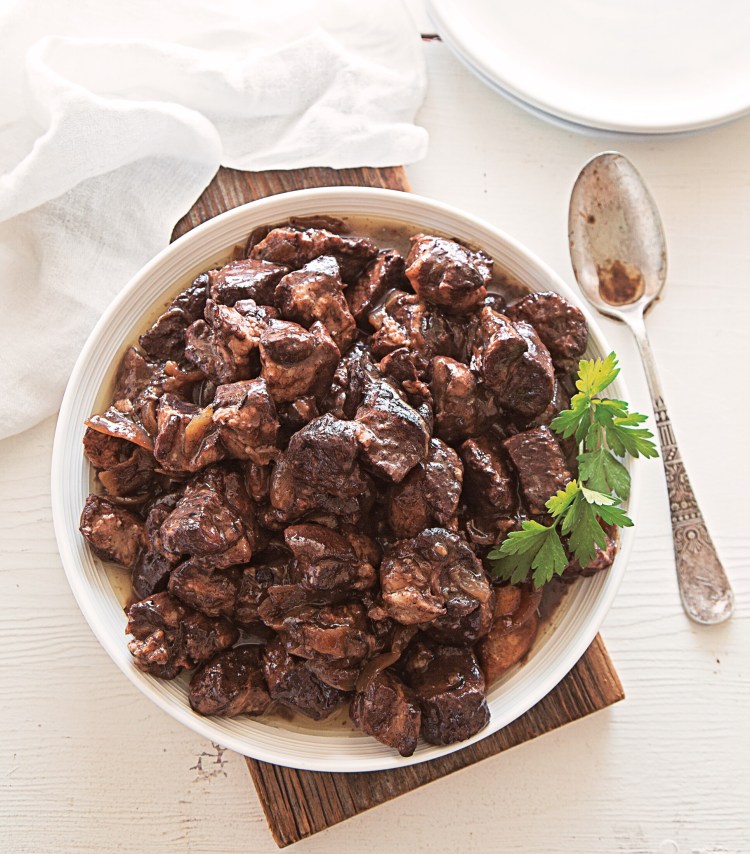As I flipped through “German Meals at Oma’s” for the first time, I had to keep reminding myself this was a cookbook, not a travel guide of Germany.
But that’s not a bad thing.

Photo by Toni Zernik, courtesy of Page Street Publishing.
Gerhild Fulson’s book of traditional dishes for the home cook — many of which come from her own grandmother — takes the reader through 16 German states. The focus, of course, is on the dishes, but each section also includes a quick, colorful description of the region, its culinary traditions and most interesting sites.
Since I’ve yet to cross Germany off my travel bucket list, the quick tour of the country was welcome and provided a good foundation to understand the recipes Fulson includes in her 192-page book.
Fulson, who previously wrote several e-cookbooks, immigrated to Canada with her parents as a toddler and learned her love of cooking and baking from her grandparents, whom she called Mutti and Papa. In the 1950s, it was not always easy for the family to find the ingredients they needed for the dishes they craved, so they improvised as they imparted their love of German food to their granddaughter, Fulson says.
With each recipe, Fulson includes “Oma’s Ecke” (Grandma’s Corner), where she shares tips and tricks for that dish or for cooking in general.
I’m not German myself, but have always been intrigued by German culture, thanks in large part to my cousins. We shared a Grampy and a Nanny, but their other set of grandparents were their Oma and Opa. My cousins, who grew up in Germantown, Wisconsin, went to Saturday school to learn German and have traveled extensively in Germany to visit family. Perusing a book of German recipes made me feel a little closer to them.
What became obvious as I considered new recipes to try is that I’m in the wrong season for this book. This time of year, I crave light meals (and ones that don’t require having a stove or oven on all day), and few like that can be found here. When the weather turns cooler, I look forward to trying my hand at Schupfnudeln (homemade potato noodles), Tiegelbraten (beef and lamb pot) and Gulaschsuppe (goulash soup).
Based on the name alone, I couldn’t resist trying the the Schweinepfeffer, which translates to “peppered pork.” The marinated spice pork dish came together easily, though a lot of chopping was involved. In the end, the pork was tender, but not as flavorful as I’d hoped it would be.
Schweinepfeffer (marinated spiced pork)
Serves 4
Ingredients
2 pounds pork shoulder roast
3 cups red wine
2 tablespoons red wine vinegar
1 large onion, coarsely chopped
2 dried bay leaves
4 black peppercorns
4 tablespoons butter
1 large onion, thickly sliced
2 cloves garlic, crushed
1 teaspoon dried marjoram
2 tablespoons cornstarch mixed with 2 tablespoons cold water
Salt and freshly ground black better, as needed
Directions
Trim the pork of excess fat. Cut the roast into 1-inch slices. Put them into a resealable freezer bag. You can also use a glass or ceramic bowl that is just big enough for the meat and marinade. Add the wine, vinegar, chopped onion, bay leaves and peppercorns. Seal the bag. If you are using a bowl, cover it with plastic wrap. Place the meat in the fridge for 8 to 48 hours, turning the meat several times during that time.
Remove the meat from the marinade. Dry it well with paper towels and cut the slices into 1-inch cubes. Strain the marinade through a sieve and set it aside.
Melt the butter in a large saucepan over medium-high heat. Add the pork cubes in batches and brown then on all sides, 5 to 8 minutes. Transfer the meat to a large bowl and add the sliced onion to the saucepan. Reduce the heat to medium and saute 8 to 10 minutes, or until the onion is golden brown. Add the strained marinade, stirring to loosen up any browned bits at the bottom of the saucepan. Return the meat to the saucepan, adding the garlic and marjoram. Reduce the heat to medium-low, bring the mixture to a simmer, cover the saucepan and cook for 45 to 60 minutes, until the pork is tender.
Stir just enough of the cornstarch slurry into the simmering liquid to thicken the gravy, which should take about 2 minutes. Season with salt and pepper and serve.
Send questions/comments to the editors.




Success. Please wait for the page to reload. If the page does not reload within 5 seconds, please refresh the page.
Enter your email and password to access comments.
Hi, to comment on stories you must . This profile is in addition to your subscription and website login.
Already have a commenting profile? .
Invalid username/password.
Please check your email to confirm and complete your registration.
Only subscribers are eligible to post comments. Please subscribe or login first for digital access. Here’s why.
Use the form below to reset your password. When you've submitted your account email, we will send an email with a reset code.